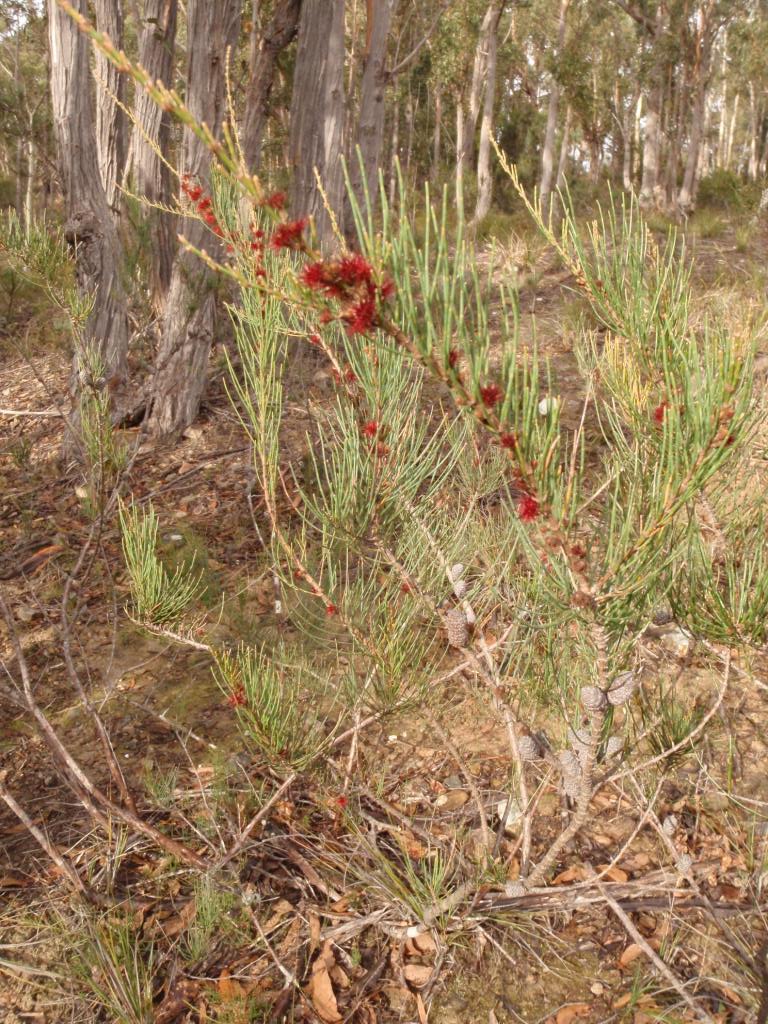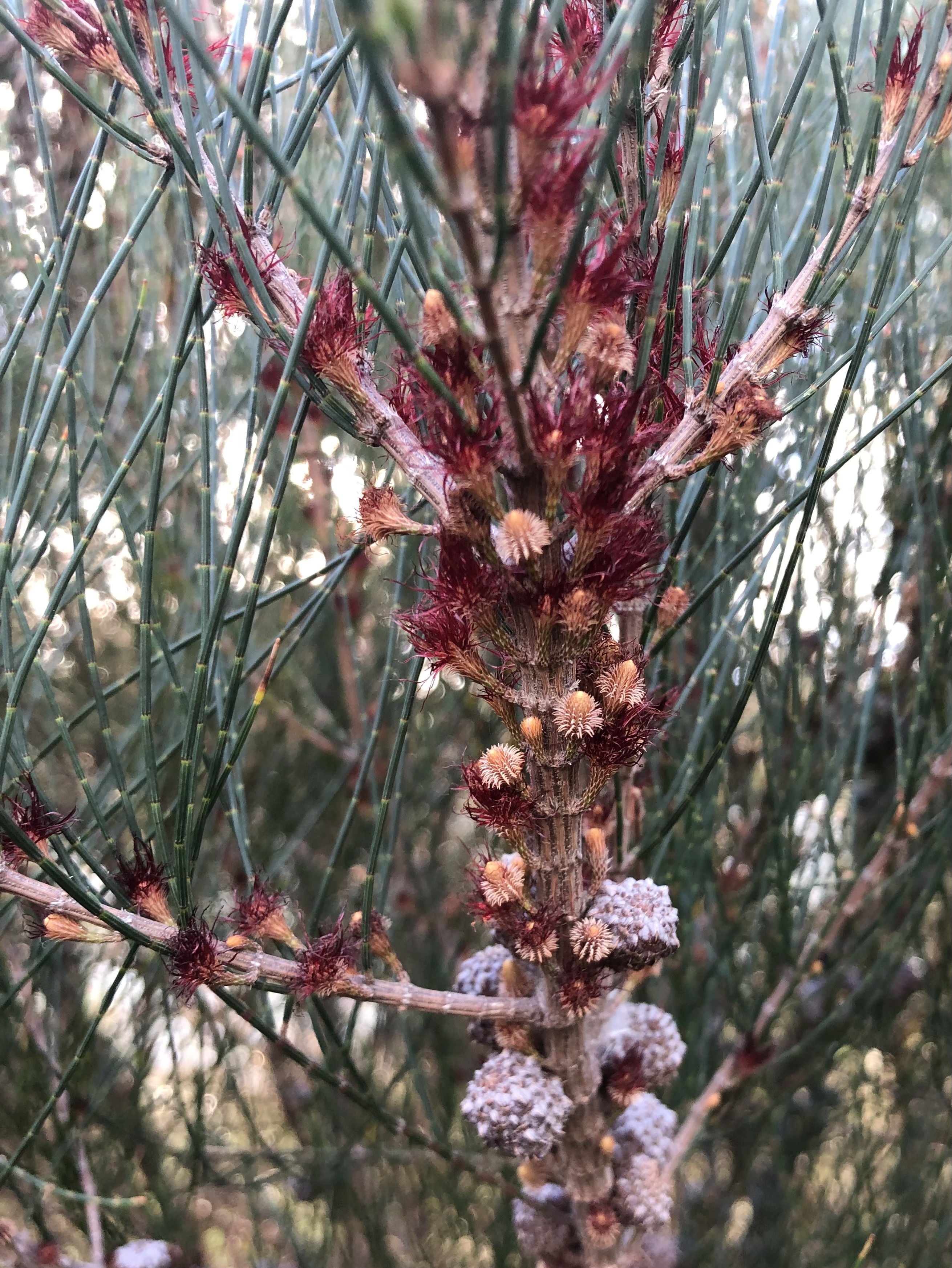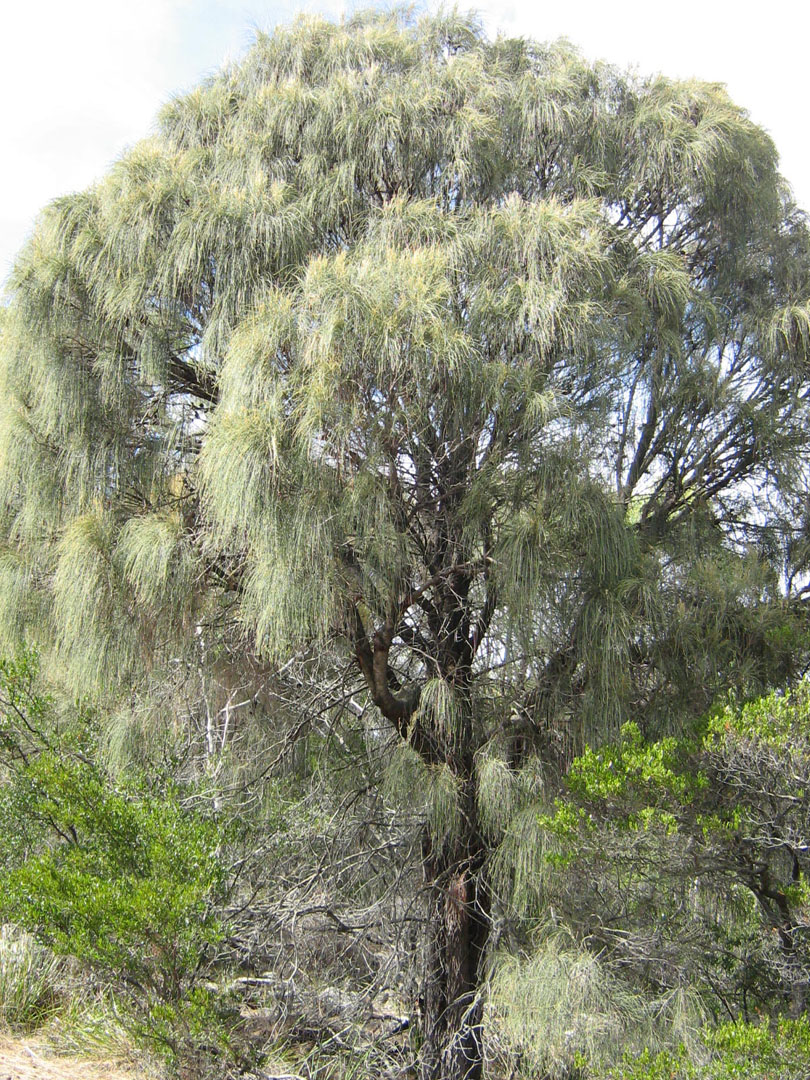Discover Tasmania’s Allocasuarinas, unique native trees with fine foliage. Important for soil health, wildlife, and resilient landscapes.

Hardy, low sprawling shrub. Male and female flowers often on separate plants; male: a red/brown terminal spike; female: red clusters on branchlets. Well-drained, full sun position. Bird attracting.
Image: Anna Povey - with permission

Shrub or small tree with slender branchlets to 10m. Male and female flowers on different trees in autumn. Male: stamens in spikes at tips of branches. Female: tiny brush-like clusters of reddish stigmas. Adaptable but requires good drainage. Useful for coastal windbreak and soil stabilisation. Bird attracting.
Image: Anna Povey - with permission

Erect shrub to 4m. Male flowers in terminal spikes; female red tufts at end of side shoots. Flowering in summer/autumn/winter. Woody cone encloses winged nut. Tolerant of dry and coastal conditions. Bird attracting.
Image: Anna Povey - with permission

Hardy small compact shrub. Male flowers: a terminal spike; female: red tuft maturing to small cylindrical woody cone. Will grow in most soils, including clay, in a sunny position. Plenty of moisture required. Bird attracting.
Image: Julie Ayre - with permission

Small much-branched tree. Male flower spikes with anthers giving a yellow-brown appearance to flowering tree. Female: tufts of red styles on short stalks. Flowering in autumn/winter/spring. Fruit are prickly woody cones. Long lived species. Good for windbreaks and stabilisng soil. Nitrogen fixing root nodules. Bird and bee attracting.
Image: Anna Povey - with permission

Hardy shrub with waxy, bead-like foliage. Female flowers: red tufts along stem in autumn. Tolerates a wide variety of conditions. Suits coastal planting. Bird attracting.
Image: Rob Wiltshire - Natural Values Atlas